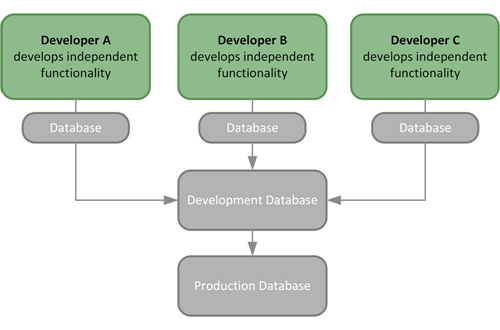CSM System Design Using Concurrent Development
When you use Blueprints for concurrent development, you use two or more Blueprints to develop the functionality and then apply each Blueprint to the production environment.
Overview
- Use two or more Blueprints to develop the functionality and then create a mApp to apply the functionality into the production environment.
- Use two or more mApps to develop the functionality and then apply each mApp to the production environment.

- Complex changes can be developed and expanded over a long period of time without affecting current Users.
- The changes themselves can be applied during downtime without requiring the actual design work to be done after hours.
- Designers can experiment with various independent changes or work on different design projects.
- The same set of changes can be applied to a test system, and then later be applied to the production environment.
However, when multiple designers are working on system configurations at the same time, conflicts, overwrites, errors, and other undesirable results can occur. For example, if one designer works on Incident Fields and then another designer modifies the Incident Form with additional fields, the work of the second designer could overwrite the work of the first designer.
Use the guidelines and best practices in this document enable multiple designers to work simultaneously on system changes.